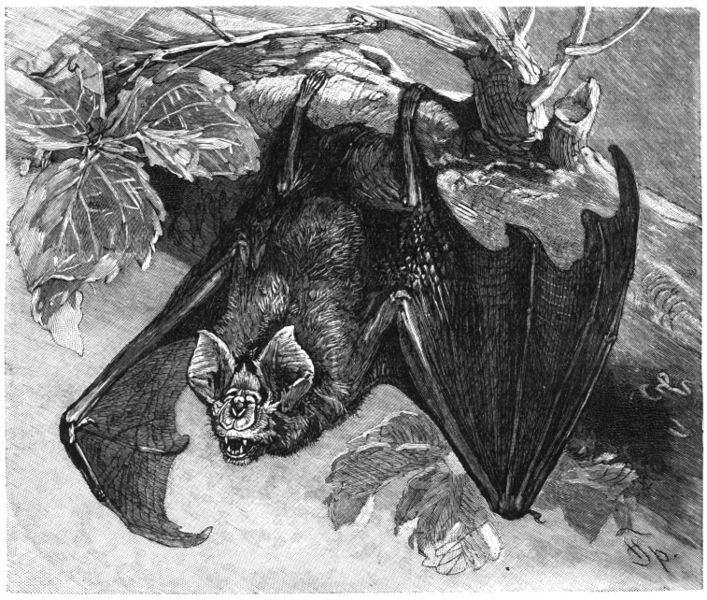Greater Horseshoe Bat (Rhinolophus ferrumequinum) - Wiki Greater Horseshoe Bat
From Wikipedia, the free encyclopedia
[Photo] Original caption: "Große Hufeisennase, Rhinophus ferrum-equinum Schreb. 4/5 nat??rlicher Gr??ße.". Translation (partly): "Greater horseshoe bat, Rhinolophus ferrumequinum Schreb. 4/5 natural size." Originator: Friedrich Specht. Source: Brehms Tierleben, Small Edition 1927
The Greater Horseshoe Bat Rhinolophus ferrumequinum is a European bat with a wingspan of 34-39cm. It can be easily identified by the flap of horseshoe shaped skin around its nostrils.
It is known to eat large insects in flight and prefers to roost while hanging upside down. It is mostly active in woodland and often roosts underground.
Status in Britain
The species is rare in Britain, confined to just a small number of sites. Its breeding sites include Brockley Hall Stables near Bristol, Iford Manor near Bath, and Littledean Hall in the Forest of Dean. Its winter hibernation sites include Banwell Caves and Compton Martin Ochre Mine in the Mendip Hills, Chilmark Quarries in Wiltshire, and Combe Down and Bathampton Down Mines near Bath. In Dorset, the species roosts at Bryanston, Creech Grange and in Belle Vue Quarry. The species also occurs at Berry Head in Devon.
Mating
This bat mates from autumn to spring but mostly in late September or October.
In the attics of old buildings Nusery Roosts are found because they can be accessed by undisrupted flight. They can contain up to 200 females. Adult males have been found in the nuseries but tend to leave when the young are born in midsummer.
What has caused its rarity?
Chemicals used in buildings that Greater Horseshoe Bats occupy can put them at risk. Roost sites being converted or becoming derelict. Chemicals used on vegetation. Foraging habitats lost because of changes in the land-use.
To prevent extinction there needs to be protection of winter roosts, nursery roosts and prey population.
Echolocation
The frequencies used by this bat species for echolocation lie between 69-83 kHz, have most energy at 81 kHz and have an average duration of 37.4 ms.
http://en.wikipedia.org/wiki/Greater_Horseshoe_Bat
| The text in this page is based on the copyrighted Wikipedia article shown in above URL. It is used under the GNU Free Documentation License. You may redistribute it, verbatim or modified, providing that you comply with the terms of the GFDL. |
